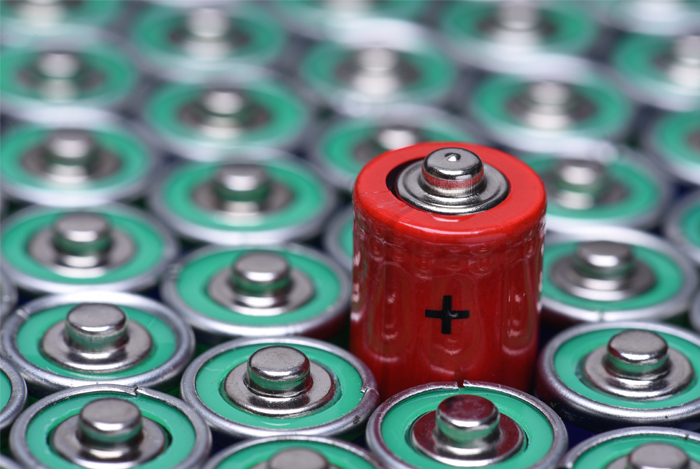If you’ve followed the news lately, you’ve probably heard a lot of talk about the dangers of lead contamination.
While you might think the news media often sensationalizes or exaggerates stories, this isn’t one of those cases. Lead is bad news.
If you aren’t careful, you and your children could become exposed to it — even in the comfort of your own home. And make no mistake — such exposure can be very dangerous for your family’s health.
But you may not know everything you need to know about this dangerous metal found in products all around you. So, I think it’s time we explored the topic of lead and how you can make sure you never have to deal with the consequences of lead contamination.
Our Relationship with Lead

Lead is a naturally occurring element found in the earth’s crust. It was once used commonly in gasoline, paint, and children’s toys. It’s still used in batteries, pottery, roofing materials, ammunition, cosmetics, and plumbing.
It’s hard to avoid inhaling or ingesting lead. And because the metal mimics the way calcium is absorbed in the body, it’s difficult for the body to recognize it as toxic. Because of this, lead courses through the blood, attaching itself to the soft tissues of the liver, kidneys, and the brain. It settles into bones and teeth where it can remain stored for decades.
But now, lead has developed a terrible reputation. It’s been blamed for crime rates worldwide, for lowering children’s IQ scores, and even the fall of Rome. Science has shown that even low-level lead exposure can cause neurological and cardiovascular disease, infertility, and decreased kidney function.
Since we’ve found out how dangerous it is, federal and state regulatory standards have helped to reduce the amount of lead in our air, water, soil, food, and other consumer products.
Lead pollution in the air has decreased drastically since the NRDC and others pushed for its removal from gasoline and industrial emissions.
The NRDC works with communities nationwide to target big polluters and strengthen government regulations on lead use. They even helped lead the movement to shut down the Exide corporations highly polluting battery-recycling plant near Los Angeles.
But just how dangerous can lead be?
How Dangerous is Lead?

Health experts agree across the board that any level of lead in someone’s blood is cause for concern.
“When pediatricians hear anything about lead, we absolutely freak out,” said Dr. Mona Hanna-Attisha, a physician who spread word about the Flint water crisis. “Lead is [an] irreversible, potent neurotoxin.”
More than half a million children aged 1 to 5 years in the United States have blood lead levels higher than 5 micrograms per deciliter, the threshold for concern of lead contamination. The CDC reports that 2.6 percent of young US children may be at risk of lead poisoning.
Until recently, children were identified as having a concerning level of blood lead if the test result was 10 or more micrograms per deciliter. Now, experts use a new level – 5 micrograms per deciliter.
This new, lower value indicates that more children will likely be identified as having lead exposure which allows parents, doctors, public health officials, and communities to take action to reduce future exposure to lead.
In recent years, federal funding for detecting and removing lead has been slashed. Local governments are often unable to find money in their budgets to fight lead exposure.
This makes very little sense to health experts and even economists. There are considerable social costs of a large proportion of young children who are exposed to high levels of lead. They can range from lost tax revenue to increased health care and education expenses that run into tens of billions of extra dollars a year.
Children living at or below the poverty line who live in older housing may be at increased risk for lead exposure. Children of minority groups are also disproportionately affected by lead.
Exposure to lead is not something that only affects you temporarily, either. A high concentration of lead in the blood can lead to lead poisoning.
Effects of Lead Poisoning

Lead exposure is at its worst when it comes to children.
Put simply, children are nearer to the ground, where soil and dust laced with lead can accumulate. They’re more likely to put objects and their fingers in their mouths that may be coated in lead particulates.
Because children’s nervous systems are still developing, they may be far more susceptible to lead’s dangerous effects. Kids under the age of 6 are thought to absorb far more lead in proportion to their size than older kids or adults do.
The Washington Post has published many stories on lead. In one story about its effects on society, a reporter said:
“Studies have shown that children exposed to lead have reduced potential for lifetime achievement and increased risk of social and behavioral problems. Some epidemiologists report evidence that lead’s effects on children can remain undetected for decades until psychiatric diseases, such as schizophrenia, emerge. Others have attributed impulsive and antisocial behavior and juvenile delinquency to lead exposure.”
Some of the common symptoms of lead poisoning to watch out for in young children include:
- Headaches
- Learning difficulties
- Slowed growth
- Reduced cognitive abilities
- Weight loss
- Fatigue, lethargy
- Insomnia
- Metallic taste in mouth
- Constipation
- Poor appetite
Eventually, lead exposure can cause severe, lifelong problems like:
- Damage to the brain and nervous system
- Slowed growth
- Behavior and learning problems
- Anemia
- Seizures
- Coma
- Death
In adults, high levels of exposure – those typically found in the workplace, like construction sites or recycling plants – can be equally severe. One expert quoted in the Washington Post said lead could, “affect fertility and sexual function, interfere with kidney function, cause muscle aches, and possibly act as a carcinogen.”
The toxic nature of lead results in it affecting all organs and functions of the body depending on the amount of exposure. Some lead-induced health effects in adults include:
- Peripheral neuropathy
- Fatigue and irritability
- Poor concentration
- Hearing loss
- Seizures
- Encephalopathy
- Nausea
- Dyspepsia
- Constipation
- Colic
- Miscarriages and stillbirths
- Reduced sperm count
- Abnormal sperm
- Anemia
- Hypertension
- Myalgia
If you have been exposed to lead, the first course of action is to get away from it at all costs. Depending on how much you were exposed to, avoiding it may ease the negative effects.
In cases where someone has been exposed to far too much lead, they may be required to undergo chelation therapy, a treatment used to remove heavy metals from the blood.
How to Prevent Lead Exposure

With all these negative health effects, you must be eager to find out how to avoid lead at all costs. The obvious goal of all this is to prevent lead exposure to children before they ever come into contact with it.
So, here are some tips for preventing lead exposure for yourself and your children:
- Talk to your state or local health department about testing paint and dust from your property for lead.
- Create barriers between living/play areas and all lead sources.
- Be aware of all peeling paint and chewable surfaces painted with lead-based paint your children may have access to.
- Keep children and pregnant women away from housing built before 1978 that is undergoing renovation.
- Prevent children from playing in bare soil.
- Take off your shoes when entering your home to prevent bringing in lead-contaminated soil from outside.
- Regularly wash children’s hands and toys.
- Pay attention to recalls for lead-contaminated toys or jewelry.
- Avoid letting your children play with conventional cosmetics, many of which contain lead.
- Wash your child’s hands regularly.
- Make sure ceramic and porcelain pottery has lead-free glaze.
- Regularly wet-mop floors and components.
- Avoid using products like cosmetics or traditional folk medicine which may contain lead.
- Avoid eating candies imported from Mexico.
- Avoid containers, cookware, or tableware used to store or cook foods are liquids that are not proven to be lead free.
- Remove toys and toy jewelry that has been recalled due to lead contamination.
- Shower and change clothes after finishing any task that involves working with lead-based products like stained glass, bullets, or using a firing range.
Nutrition also plays a huge role in mitigating exposure to lead. Some foods can limit the absorption of lead, especially high-calcium foods like these:
Iron found in lean red meats, beans, peanut butter, and cereals also contributes to lead resistance. So does Vitamin C, in foods such as oranges, green and red peppers, and juice.
Final Thoughts

As you can see, lead is nothing to joke about. That’s why it’s so important to educate ourselves about the dangers it presents and how we can avoid coming into contact with it.
Now that you have a better understanding of the subject, share the knowledge with your loved ones so they’re well-equipped to avoid the consequences of lead contamination.
Hopefully, our society will work harder to remove lead and other toxic contaminates from our environment to stop lead exposure once and for all.
Are you concerned about lead exposure in your area? Leave your thoughts in the comments below!
The post What Makes Lead So Dangerous? appeared first on Nutrition Secrets.
http://www.nutritionsecrets.com/what-makes-lead-so-dangerous/
No comments:
Post a Comment